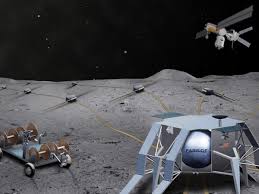
Breaking News
 Every parent needs to read this...
Every parent needs to read this...
 The Secret to Becoming a MAN | The Glenn Beck Podcast | Ep 270
The Secret to Becoming a MAN | The Glenn Beck Podcast | Ep 270
 Future Of Human-Machine Integration
Future Of Human-Machine Integration
Top Tech News
 Blue Origin New Glenn 2 Next Launch and How Many Launches in 2026 and 2027
Blue Origin New Glenn 2 Next Launch and How Many Launches in 2026 and 2027
 China's thorium reactor aims to fuse power and parity
China's thorium reactor aims to fuse power and parity
 <p>Gideon Saar was speaking on Tuesday at an international co
<p>Gideon Saar was speaking on Tuesday at an international co
 Goodbye, Cavities? Scientists Just Found a Way to Regrow Tooth Enamel
Goodbye, Cavities? Scientists Just Found a Way to Regrow Tooth Enamel
 Scientists Say They've Figured Out How to Transcribe Your Thoughts From an MRI Scan
Scientists Say They've Figured Out How to Transcribe Your Thoughts From an MRI Scan
 Every parent needs to read this...
Every parent needs to read this...
 Calling Dr. Grok. Can AI Do Better than Your Primary Physician?
Calling Dr. Grok. Can AI Do Better than Your Primary Physician?
 HUGE 32kWh LiFePO4 DIY Battery w/ 628Ah Cells! 90 Minute Build
HUGE 32kWh LiFePO4 DIY Battery w/ 628Ah Cells! 90 Minute Build
 Scientists Say They've Figured Out How to Transcribe Your Thoughts From an MRI Scan
Scientists Say They've Figured Out How to Transcribe Your Thoughts From an MRI Scan
NASA funds concept for gigantic radio telescope on far side of Moon

The telescope has been funded under the NASA Innovative Advanced Concepts (NIAC) program, which fosters the development of some of the wildest and, as the name suggests, innovative projects that could one day revolutionize science and exploration missions.
Space agencies around the globe are trying to find the most imaginative and practical ways to make use of the resources already present on solar system bodies – such as the Moon and Mars – in order to make ambitious projects a reality. This is because in-situ resource utilization doesn't require massive amounts of materials to be transported from Earth into space at an average cost of US$10,000 for a 0.45-kg (1-lb) payload.
It is, therefore, hardly surprising that the idea of using the Moon's own geography to construct a vast radio telescope garnered NIAC investment.
Under the current proposal, a telescope lander, which would presumably host the main science payload, would descend to the center of a 3-5 km (1.8-3.1 mile) diameter crater located on the far side of the Moon. A separate lander, containing the rovers designed to construct the telescope, would land beyond the rim of the crater.

 WTF Happened In 1971?
WTF Happened In 1971? Unbanked In A Connected World
Unbanked In A Connected World

